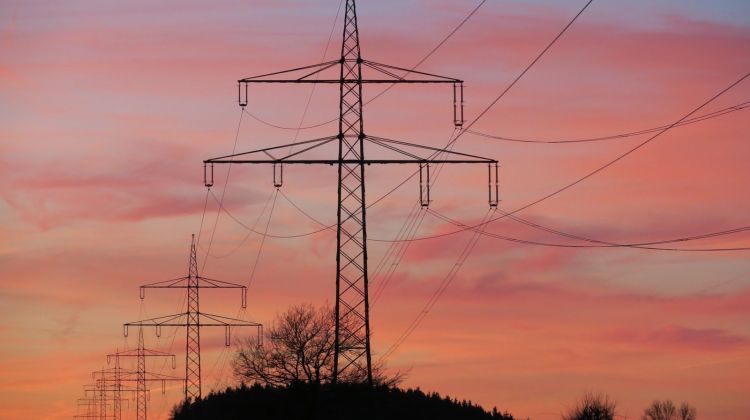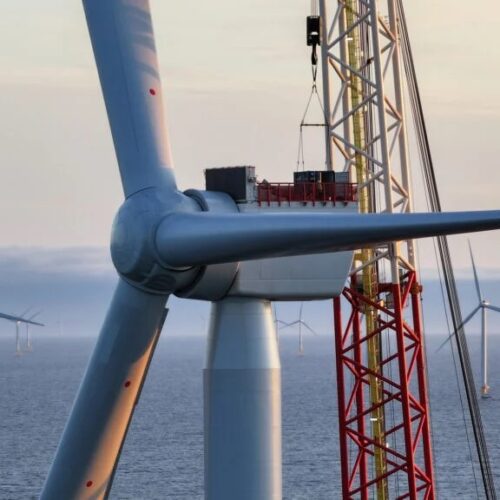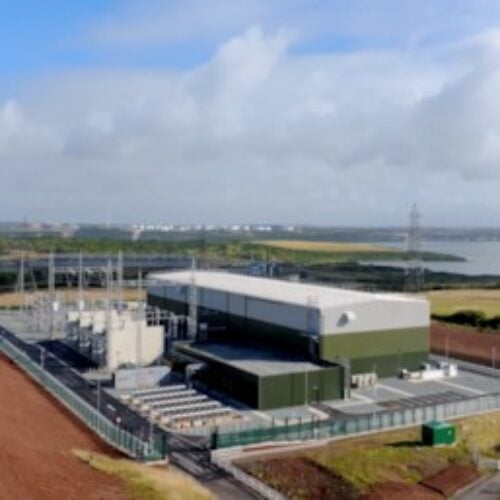National Grid ESO (NGESO) has released its Summer Outlook 2023 predicting that balancing costs could be around 30% lower than last summer.
The drop is attributed to lower energy wholesale prices as well as a number of NGESO policies and services such as the Frequency Risk and Control Report; phase 1 of the Voltage Mersey and stability pathfinders; alongside the Constraint Management Interstrip Service.
On 10 April, high wind generation saw imbalance prices drop to £-128.11/MWh.
The peak electricity demand forecast for summer 2023 is 28.3GW, for which the NGESO has said the UK will have sufficient available supply for.
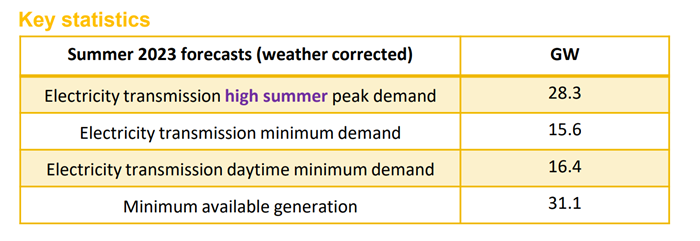
“We are confident that there will be sufficient available supply to meet demand and our reserve requirement throughout summer accounting for variation of both weather and interconnector flows,” stated the Outlook.
“We expect lower levels of exports to continental Europe than last summer, but they are likely to be higher than typical summers. We expect to have sufficient operational surplus to support some exports to Europe throughout summer if needed. We do not expect high interconnector exports when demand in Great Britain is high as current peak forward prices are higher here than in Europe.”
The NGESO also stated that emergency instructions are not anticipated to be required this summer.
According to NGESO predictions, the UK will have “significant spare capacity” during summer as shown below.
Figure 1: Day-by-day generation and demand forecast for summer 2023
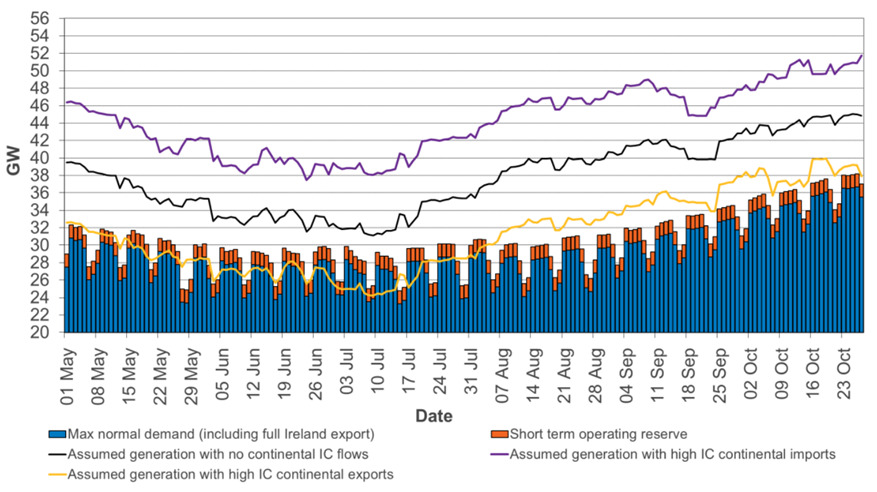
This means that the UK is well equipped to address potential interconnector export and import uncertainty, as it will not impact security supply.
“This summer we expect that operations will be similar to last year. We expect to deliver our world leading reliability standards across summer 2023 and we continue to have the right tools in place to manage low demand periods and other operational issues over this summer,” wrote Fintan Slye, director of NGESO in the Foreword.
“We expect that summer minimum demands will be slightly lower than those seen across summer 2022, continuing the trend of lower demands over the last couple of years. Peak transmission demand is also expected to be lower this summer compared to recent years, as new embedded generation on the Distribution Networks are expected to suppress electricity demand at the transmission level.”
